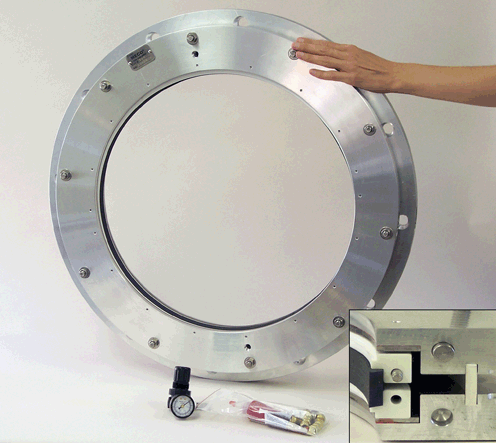Shaft Seals Stop Hexane Loss
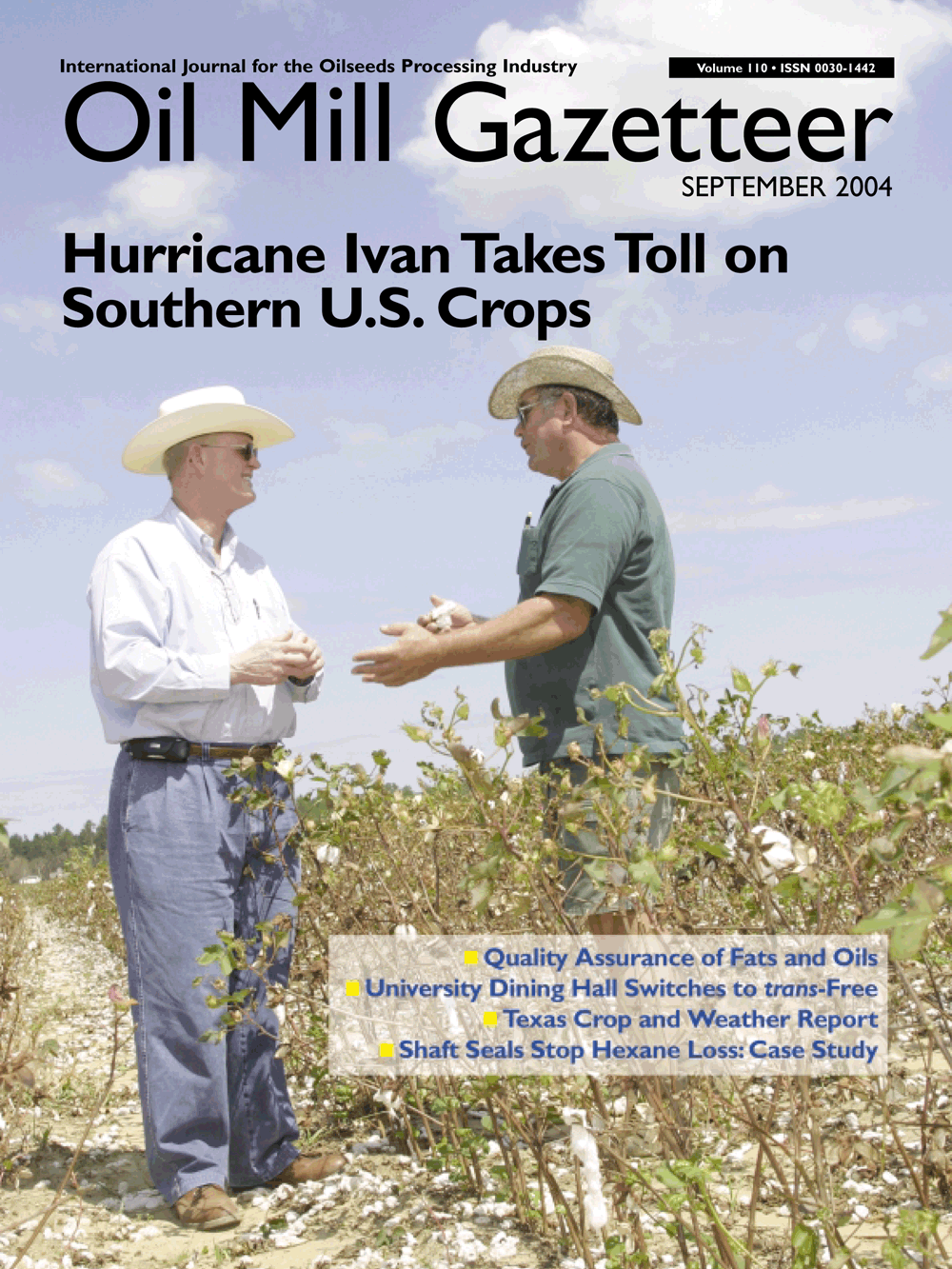
Oil Mill Gazetteer• Volume 110,September 2004
Shaft Seals Stop Hexane Loss:
A Case Study
A soybean oil extraction plant in Alabama reports a marked reduction in hexane loss after replacing the packing glands on its extractor, feeder, and discharge screw shafts with custom-engineered shaft seals. Although other brands of seals are available, this particular case was solved with the MECO brand seals. The process at this soybean extraction mill is typical: soybeans are ground to a fine pulp and mixed with hexane, which causes the oil to be separated from the cellulose in the beans. The oil is heated to the point where all of the hexane evaporates off and just the oil is left. This particular plant operates continuously, 24 hours a day, processing 130,000 bushels of soybeans each day. The problem this plant wanted to solve was a common one to all oilseed extraction mills that use hexane in the process: hexane in vapor form escapes from the equipment around the drive shafts. Hexane is a costly and volatile solvent, which converts quickly from a liquid to a gas at room temperature. Federal regulations have established a maximum emissions standard for hexane vapors in oil mills. The production line includes a feeder screw, which “feeds” into the extractor, turning at 68 rpm. At this stage, the product in the conveyor is at 225°F. Inside the extractor itself, the temperature drops to around 130–140°F. After the extraction process, the pulp is discharged via another screw conveyor, at approximately the same temperature and turning at 75 rpm.
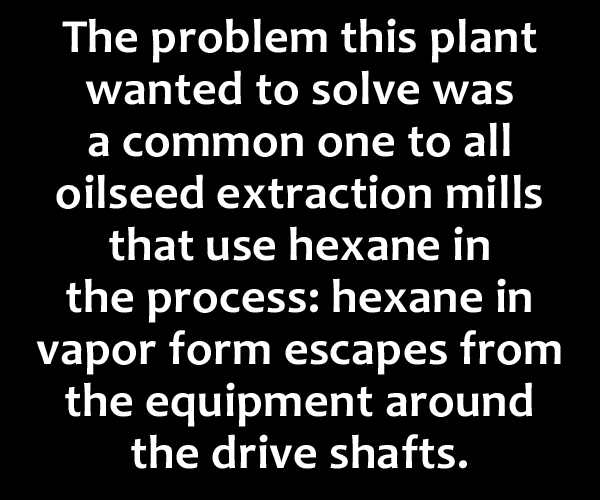
By the inherent nature of screw conveyors, their long shafts tend to run out, i.e., they rotate on an elliptical rather than a circular path. It is this shaft run-out that causes packing in the stuffing boxes around the shafts to eventually become compressed and create a leak path for the product inside, in this case hexane vapors. Maintenance workers at the Alabama plant were scheduling monthly out-ages to repack the stuffing boxes, which took two workers two hours each time. Several years ago, the plant’s maintenance superintendent decided to try an alternative solution to seal the extractor shaft with custom shaft seals. He had seen them used successfully at another oil mill where he had worked previously and contacted the distributor for the region. The distributor came into the plant to provide assistance with the exact measuring of the extractor shaft and also was there to help install the first seal. This process took the team less than one day because the seal was built fully-split so that the bearing would not have to be removed. In the following year, the seals were installed on both ends of the feeder screw, and in the next year they were installed on the discharge screws. The distributor helped out with seal installations and rebuilds until plant workers were trained; now they work on them without assistance. The patented EAS (externally adjustable seal) design is based on the use of a driving elastomer, which wraps around and grips the shaft. This both protects the shaft from abrasion damage and blocks product migration along the shaft, even if it is scored or pitted. Through friction, the elastomer turns with the shaft and drives sacrificial rotors to turn against stator plates, forming the seal interface. No relative movement takes place between the shaft and any of the rotating seal components, so all wear is limited to the seal interfaces between rotors and stators. When enough rotor wear occurs, the seals can be quickly rebuilt by replacing only the rotating parts. The seals are able to accommodate thermal growth of the shaft during the process, as well as shaft run-out of 6mm T.I.R. (total indicator run-out) and more.
The MECO seals are designed to be run with a nitrogen purge in the seal cavity. This serves to maintain consistent seal face pressures and to keep product out of the seal. The plant didn’t have a good supply of nitrogen when they first installed the seals; when they tried to use bottled nitrogen, they found that each bottle only lasted three days and soon ceased using the purge. Running in this manner, the seals failed inside of a year due to excess wear on the internal rotating components. When the company built a refinery next to the extraction mill, they installed a large nitrogen tank to supply both plants. Since the seals have been purged with nitrogen, they have been running for up to two years between rebuilds.
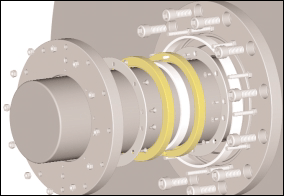
Article provided by Woodex Bearing Company and MECO Seals. If you have a case study involving your product or service, feel free to submit it to the Oil Mill Gazetteer.
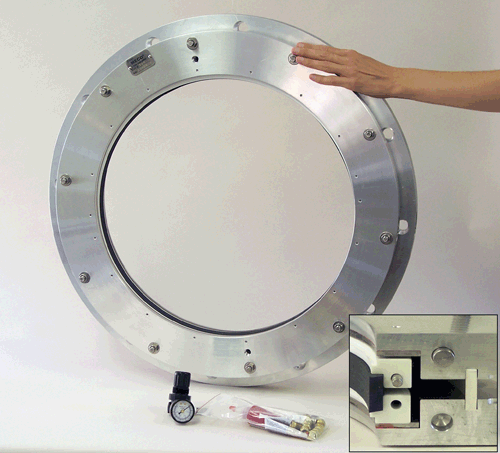
Fully-split MECO EAS-model seal for a Crown extractor shaft
Reprinted with permission from Oil Mill Gazetteer 9/2004

